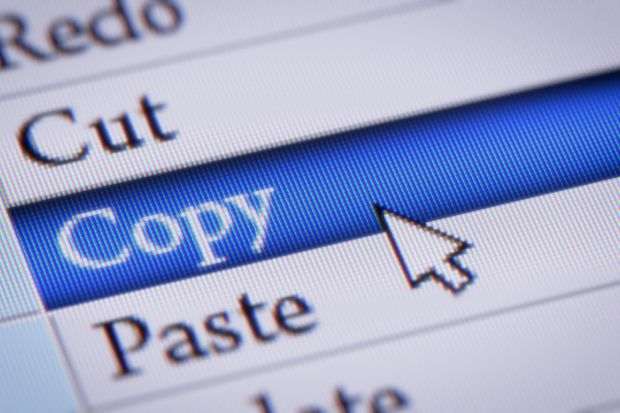Over the past 15 years, I have been part of quality audit panels at 10 universities in four countries. In eight of those institutions, I found evidence of a concerning form of academic malpractice.
Students at these universities are told that they must submit their work to what is commonly known as “plagiarism software”, usually Turnitin. They are required to get a similarity score below a particular percentage before they may submit their work for assessment.
The result is that students repeatedly rework the passages highlighted by the software as identical to texts elsewhere until the similarity score falls below the designated threshold. They are, thus, taught to trick software rather than to deepen their own learning.
My research argues that setting similarity thresholds is not only farcical but also educationally unsound for at least five reasons.
First, the software cannot identify plagiarism. It can only match direct words, not ideas. A variety of online paraphrasing tools, such as quillbot and paraphraser.io, have sprung up to enable students to change sufficient numbers of words to trick the software. We actively encourage such game-playing through our poor education practices.
Second, many disciplines have formulaic terms and specialist phrases that students are expected to use. In some cases, the software is programmed to disregard these words, but not always. And often the flagged text is laughably commonplace. “In the South African higher education system” and “submitted in fulfilment of the PhD degree” were just two of hundreds of common phrases flagged in a student’s Turnitin report I recently analysed.
Third, setting a cut-off point also gives the message that plagiarism is okay; it just needs to be below the arbitrary percentage set by academics.
Fourth, the policing of similarity percentages works from the assumption that our job is to catch plagiarism by students, who are not to be trusted. The student is no longer a novice in a knowledge field: they are a customer who must be monitored lest they make off with the goods without paying.
Universities do have a responsibility to ensure that those who receive qualifications have indeed come to understand the knowledge that their transcripts represent. This entails taking breaches of academic integrity seriously and, indeed, meting out punishment where appropriate. But when our policies and practices foreground mistrust and punishment over the provision of meaningful educational experiences we are in dereliction of our duties.
Fifth, the use of the software gives the impression that referencing is primarily a means of attributing words to their originators and that referencing is a technical process rather than one related to building knowledge. In fact, citation is about far more than avoiding plagiarism. We use it to position our work within a field, substantiate our claims, offer additional sources for further discussion and identify the prior knowledge contributions to which we are adding.
Many referencing norms are discipline-specific. In the social sciences, as a crude example, it is common to include references within the methods section to ensure the credibility of the author’s research design choices. But in many fields within the natural sciences, references are found only in the literature review because methodological choices are widely accepted and naming those who have used such methods previously would be considered odd.
Plagiarism is a problem because it indicates that the student has not enjoyed meaningful engagement with knowledge. Parroting the ideas of others without demonstrating some personal meaning indicates that learning has not happened. That is true whether the plagiarism is intentional – as students seek shortcuts to the end goal of a qualification – or unintentional. Either way, it’s an educational problem that requires educational solutions.
But the police-catch-punish approach pushes those students who are seeking shortcuts to qualification to become ever more sophisticated in their plagiarising practices, rather than interrogating and addressing what underpins their misunderstanding of what higher education is all about.
My research suggests that the moral outrage associated with plagiarism emerges largely from the commodification of knowledge, rather than from an ethical concern about student learning. In a world where a higher education qualification is packaged largely as credentialling, it is no surprise that many students have extremely instrumentalist – and sometimes ethically dubious – approaches to acquiring the goods of the academy.
The process of bringing students into a transformative relationship with knowledge is complicated and ongoing. Importantly, it starts with conversations between academics about why we should value such transformations and how we can nurture them. It also often entails challenging managerialist institutional cultures invested more in protecting and marketing a product than educating people.
Plagiarism can be indicative of serious educational deficits when students lift the work of others without making personal sense of it. Or it can be indicative of more minor educational deficits as students figure out what work citation does in each field. Either way, it should not be overlooked.
But we’re not selling a commodity; we are educating people. We need to keep focused on the difference.
Sioux McKenna is director of the Centre for Postgraduate Studies at Rhodes University, South Africa.






